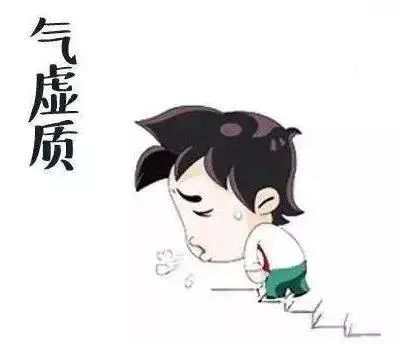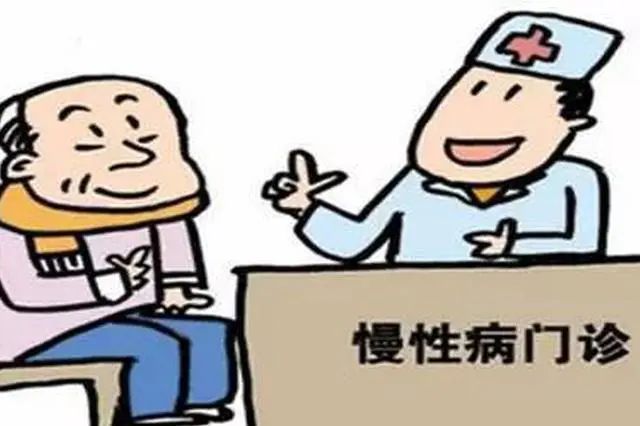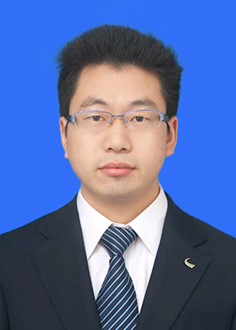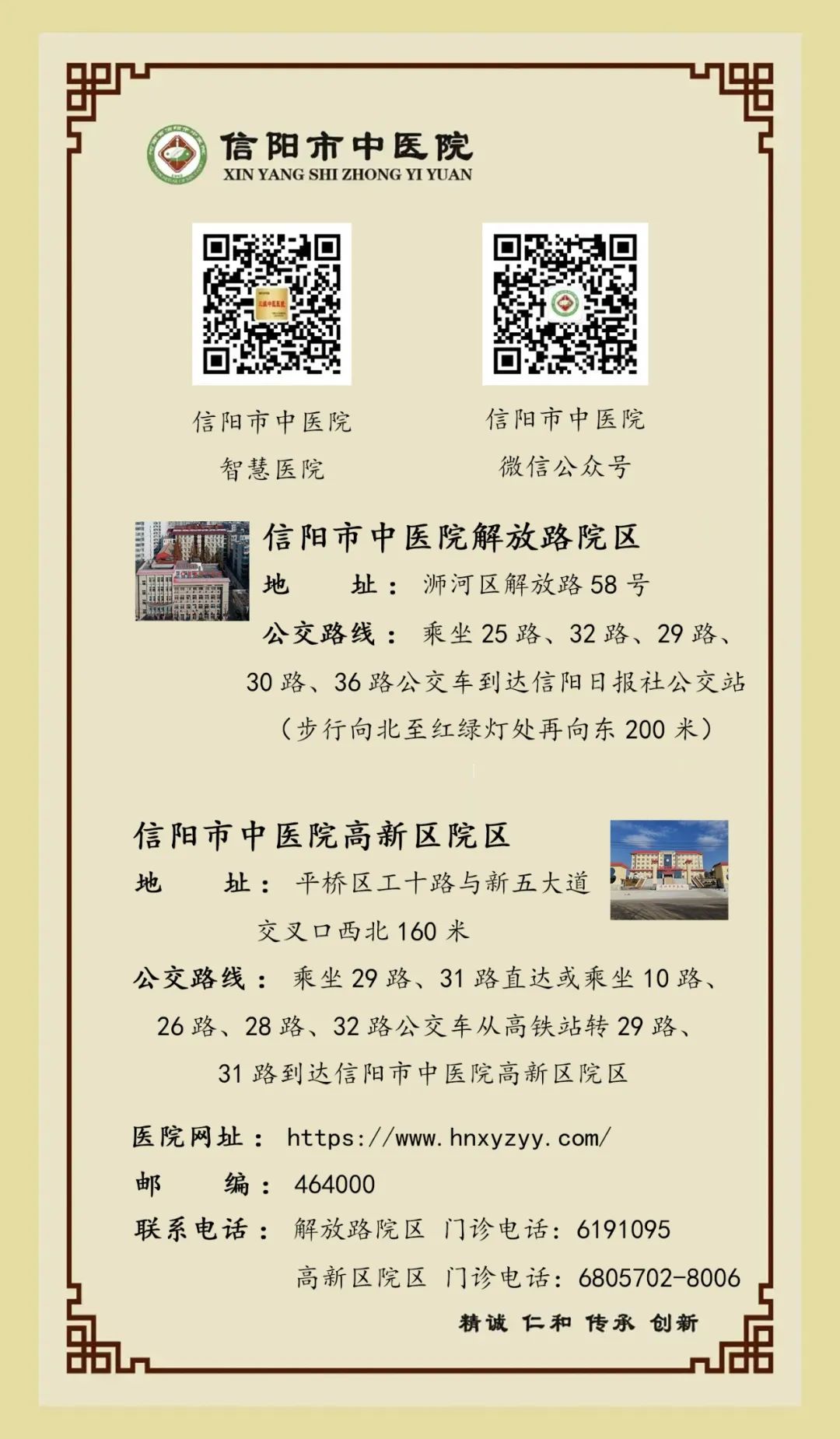Constitution accompanies us throughout our lives, influencing our work and daily activities. Correctly understanding our constitution can significantly enhance our quality of life. Currently, there are nine types of constitutions classified, with eight being imbalanced and one being harmonious. Among these, Qi Deficiency constitution ranks first among the eight imbalanced types, accounting for approximately 13% of the sub-healthy population in China. Qi Stagnation constitution, closely related to Qi Deficiency, is also one of the eight imbalanced types, representing about 8% of the general population in China, highlighting its significant impact on human health.
Traditional Chinese Medicine (TCM) believes that Qi is the most fundamental substance in the human body, closely related to the spleen, stomach, lungs, and kidneys. Abnormalities in Qi often manifest as Qi Deficiency and Qi Stagnation, leading to the formation of these two constitutions: Qi Deficiency constitution and Qi Stagnation constitution. Below, we will introduce these two constitutions separately.
Qi Deficiency constitution is characterized by insufficient Qi in the body, primarily manifested as weak breath, low organ function, and a general state of deficiency.

Characteristics of Qi Deficiency constitution include:
Soft and weak muscles, low voice, shortness of breath, reluctance to speak, easy fatigue, poor spirit, tendency to sweat, pale red tongue with tooth marks on the edges, weak pulse, introverted personality, dislike of risk, susceptibility to colds, and intolerance to wind, cold, heat, and dampness. According to the 2009 “Classification and Judgment of TCM Constitutions” standard, individuals exhibiting characteristics such as soft muscles, low voice, easy sweating, easy fatigue, and susceptibility to colds can be identified as having Qi Deficiency constitution.

Based on different manifestations, Qi Deficiency can be further divided into:
1. Lung Qi Deficiency
2. Spleen Qi Deficiency
3. Heart Qi Deficiency
4. Kidney Qi Deficiency
Lung Qi Deficiency often presents as shortness of breath, especially after activity, reluctance to speak, easy sweating, and susceptibility to colds;
Spleen Qi Deficiency primarily manifests as small appetite, abdominal distension, loose stools, easy fatigue, and a sallow complexion;
Heart Qi Deficiency mainly presents as shortness of breath, palpitations, chest tightness, and a pale complexion;
Kidney Qi Deficiency is characterized by weakness in the lower back and knees, hearing loss, pale complexion, fatigue, and frequent nighttime urination.

The formation of Qi Deficiency constitution is the result of both congenital endowment and acquired factors. Congenital endowment serves as the foundation for constitution formation; parents with Qi Deficiency constitution or poor nutritional status during pregnancy can lead to the development of Qi Deficiency constitution. Acquired environmental factors are significant contributors to the long-term existence of Qi Deficiency state, even converting non-Qi Deficiency constitutions into Qi Deficiency constitutions.
Acquired factors include:
1. Dietary Nutrition: Eating less and having a biased diet can lead to the formation of Qi Deficiency constitution. If one eats less to lose weight, the generation of Qi in the body is insufficient, making it easy to develop Qi Deficiency constitution. Long-term preference for certain foods can harm the spleen and stomach, leading to insufficient Qi generation and the formation of Qi Deficiency constitution;

2. Exercise: Life is movement; appropriate exercise helps strengthen muscles and bones, smooth Qi flow, and harmonize organs. Overexertion (including excessive physical labor, mental strain, and sexual activity) or improper exercise can consume the body’s Qi and blood, leading to a deficient constitution;

3. Emotional State: Long-term states of sadness, fear, or excitement can greatly deplete our Qi and blood, leading to the formation of Qi Deficiency constitution;

4. Living Environment: People living in high-altitude areas like Qinghai and Tibet or in hot and humid southern regions are prone to Qi Deficiency constitution, possibly due to excessive Qi consumption by the environment;

5. Sleep: Insufficient sleep and irregular schedules do not allow enough time for Qi recovery, leading to the gradual onset of Qi Deficiency constitution;

6. Chronic Diseases: Chronic diseases such as hypertension, type 2 diabetes, malignant tumors, overweight, and obesity can lead to the formation of Qi Deficiency constitution due to long-term consumption of the body’s Qi.

Individuals with Qi Deficiency constitution are prone to colds, dizziness, organ prolapse, and generally have weak resistance, slow recovery after illness, and may also lead to postpartum weakness in women and postpartum eye diseases (characterized by dryness of the eyes, blurred vision, dizziness, and tinnitus after childbirth).
Constitution is inherited from the congenital and nurtured by the acquired. Regular routines and a calm mind can effectively strengthen the constitution. The regulation and protection of Qi Deficiency constitution should be approached through dietary therapy, exercise, moxibustion, massage, and medication.
1. Dietary Therapy: Food is not only the foundation of our survival but also an effective tool for regulating our constitution. Individuals with Qi Deficiency constitution should consume foods that are neutral to slightly warm and have nourishing properties, such as jujubes (大枣, Dazao), raisins, apples, sweet potatoes, water chestnuts, pumpkins, Chinese yam (山药, Shanyao), glutinous rice, millet, carrots, shiitake mushrooms, tofu, chicken, rabbit meat, beef, green fish, and silver carp. Additionally, foods can be selected based on the specific organs affected by Qi Deficiency, such as jujubes for spleen Qi and apples for heart Qi. Foods that deplete Qi, such as water spinach and raw radishes, as well as cold, greasy, and rich foods should be minimized to avoid harming the middle Yang and leading to phlegm-damp constitution.
2. Exercise and Health Maintenance: Individuals with Qi Deficiency constitution should not be overly sedentary or excessively fatigued, and should avoid intense and high-intensity exercises. They can choose relatively gentle exercises such as Baduanjin (八段锦), yoga, Tai Chi, and brisk walking. For those with lung Qi deficiency, gentle and slow exercises like Baduanjin and Tai Chi are recommended; while those with spleen Qi deficiency can engage in slightly more intense exercises to enhance Qi and blood circulation and improve appetite. Choosing suitable exercise methods and maintaining them over time can help regulate the constitution.
3. Moxibustion and Massage: If conditions permit, moxibustion or massage can be used to regulate the constitution. For individuals with Qi Deficiency constitution, massaging or moxibusting points such as Qihai (气海), Guanyuan (关元), and Zusanli (足三里) can improve the constitution. Additionally, those with lung Qi deficiency can moxibust or massage the Feishu (肺俞) and Taiyuan (太渊) points; those with heart Qi deficiency can choose the Xinshu (心俞) and Neiguan (内关) points; those with spleen Qi deficiency should select the Tianshu (天枢) and Pishu (脾俞) points; and those with kidney Qi deficiency can massage the Yongquan (涌泉) and Taixi (太溪) points.
4. Medication: The regulation of Qi Deficiency constitution should be based on the specific manifestations. For lung Qi deficiency, Yupingfeng San (玉屏风散) can be used to prevent colds, and appropriate use of Taizishen (太子参) can nourish the lungs and tonify Qi; for spleen Qi deficiency, Buzhong Yiqi Wan (补中益气丸) can strengthen the spleen, and Huangqi (黄芪) and Dangshen (党参) can be used to tonify the spleen and Qi; for kidney Qi deficiency, Jinkui Shenqi Wan (金匮肾气丸) can be used for regulation, and appropriate use of Huangjing (黄精) can tonify the kidneys; for heart Qi deficiency, Shengmai Yin (生脉饮) granules can tonify Qi, nourish blood, and generate fluids for the heart, and Baiziren (柏子仁) can be used to calm the heart. For those with severe Qi deficiency, timely medical attention and professional, systematic treatment are necessary.
Qi Stagnation constitution is characterized by emotional depression, anxiety, and other manifestations of Qi stagnation. Qi Stagnation constitution has the following characteristics: individuals are often thin, emotionally depressed, emotionally fragile, irritable, with a pale red tongue, thin white coating, and wiry pulse. They tend to have an introverted and unstable personality, are sensitive and anxious, and have poor adaptability to emotional stimuli, particularly in rainy weather. According to the 2009 “Classification and Judgment of TCM Constitutions” standard, individuals who are thin, often feel depressed, have chest tightness, frequently sigh without reason, and are prone to insomnia can be identified as having Qi Stagnation constitution.
Qi Stagnation constitution is one of the eight imbalanced constitutions, with a significantly higher proportion in women than in men, and is more common among young people.
The formation of Qi Stagnation constitution is the result of a combination of physical, psychological, and social factors. 1. Physical Factors: Insufficiency in the body (including congenital and acquired insufficiency) creates a physiological basis for Qi Stagnation constitution. Individuals with congenital insufficiency are more susceptible to negative emotions. Acquired insufficiency, such as women after miscarriage or childbirth, leads to significant Qi and blood deficiency, which cannot nourish the spirit, resulting in restlessness and anxiety. If they are then attacked by external pathogens, causing Qi stagnation, it creates conditions for the formation of Qi Stagnation constitution. 2. Psychological Factors: Some emotionally sensitive individuals, like Lin Daiyu from “Dream of the Red Chamber” or the poet Hai Zi who committed suicide, are sensitive and often talented, easily swayed by emotions. Excessive emotional fluctuations can disrupt Qi movement, leading to Qi Stagnation constitution. Individuals who have been overly protected during their upbringing and have faced little hardship may be psychologically fragile and unable to withstand setbacks, leading to Qi stagnation. Perfectionists who carry high self-expectations but cannot accept their reality may also experience anxiety and depression. Additionally, some individuals may experience psychological health issues due to illness; for example, stroke patients who suddenly lose control of their limbs may develop panic, anxiety, and depression, leading to prolonged Qi stagnation. 3. Social Factors: Humans are social beings, and many social factors can lead to Qi stagnation. For instance, academic failures, unsatisfactory work, conflicts with partners, or feeling like a failure can easily trigger Qi stagnation.
Individuals with Qi Stagnation constitution are prone to symptoms such as organ distress, plum pit Qi, lily disease, depression, and insomnia. Organ distress is primarily characterized by a gloomy expression and easy crying. Plum pit Qi is characterized by a sensation of obstruction in the throat. Lily disease is characterized by confusion and unstable mental state. Depression is characterized by feelings of sadness and chest and rib discomfort.
Qi Stagnation constitution is not equivalent to depression; how do we understand the relationship between the two? Figuratively speaking, individuals with Qi Stagnation constitution are on one end of a bridge, while depression is on the other end. Are they close? They are very close, just a step away. Are they far? Once you realize it, you can turn around and actively adjust, and depression will drift further away.
Individuals with Qi Stagnation constitution should consume foods that promote Qi circulation and regulate spleen and stomach functions, while avoiding sour and astringent foods.
1. Foods Suitable for Qi Stagnation Constitution:
Grains: barley, buckwheat, wheat, sorghum.
Vegetables: mugwort, cilantro, scallions, garlic, radishes, onions, bitter melon, daylilies, kelp, seaweed, cabbage, loofah, cowpeas, mushrooms, fermented black soybeans.
Fruits: kumquats, citrus fruits, hawthorn, pomelo. Herbal teas: rose, chrysanthemum, jasmine, etc.
2. Foods to Avoid for Qi Stagnation Constitution:
Fruits: pomegranates, black plums, green plums, bayberries, strawberries, star fruit, sour jujubes, plums, etc.
Vegetables: pumpkins, pickled vegetables, and rich foods. Cold foods, such as ice cream, frozen drinks, etc. Stimulants like tobacco, alcohol, coffee, and strong tea.
What should individuals with Qi Stagnation constitution pay attention to in their daily lives?
1. Maintain a cheerful disposition: Engage in self-encouragement and communicate with close and trustworthy individuals. Seek professional psychological guidance when feeling excessively low.
2. Focus on building psychological health: Find suitable methods to enrich the mind, cultivate hobbies such as calligraphy, reading, gardening, or pet care.
3. Maintain regular routines: Avoid staying up late and excessive fatigue; lead a regular life.
4. Increase physical activity: Engage in appropriate exercise, go out for leisure, and participate in group outdoor sports activities, such as practicing Tai Chi or playing chess in the park. For those who are physically able, engage in higher intensity exercises like hiking or playing ball games; practice breathing techniques and meditation.
Common medications for regulating Qi Stagnation constitution include:
1. Xiaoyao Wan (逍遥丸): It has the effects of soothing the liver, strengthening the spleen, nourishing blood, and regulating menstruation. It is used for depression and discomfort caused by liver Qi stagnation and spleen deficiency, with symptoms such as chest and rib discomfort, dizziness, decreased appetite, and menstrual irregularities;
2. Dan Zhi Xiaoyao Wan (丹栀逍遥丸): It has the effects of soothing the liver, relieving Qi stagnation, clearing heat, and regulating menstruation. It is used for liver Qi stagnation transforming into fire, with symptoms such as chest and rib discomfort, irritability, red cheeks, dry mouth, decreased appetite, tidal fever, and women’s early menstruation or menstrual irregularities.
Qi Deficiency and Qi Stagnation are two common constitution types, both closely related to Qi. They can be mutually causative and can even transform into one another. For those with severe Qi Deficiency or Qi Stagnation, timely medical attention and professional, systematic treatment are essential. Healthy eating, regular routines, a positive mindset, avoiding overwork and excessive leisure, and proactive regulation are key to overcoming these conditions.
AUTHOR

Peng Bangjin
Department: Emergency Department
Specialty: Emergency Medicine
Title: Attending Physician
Medical Expertise: Proficient in diagnosing and treating common and frequently occurring internal diseases, especially skilled in using integrated Chinese and Western medicine methods to treat critically ill patients.
Doctor’s Introduction: Graduated from Henan University of Traditional Chinese Medicine in 2010 with a bachelor’s degree. Studied at Zhengzhou University First Affiliated Hospital from 2012 to 2013, and at Henan University First Affiliated Hospital from 2019 to 2020. Engaged in integrated Chinese and Western internal medicine for over 10 years. Proficient in diagnosing and treating common and frequently occurring internal diseases, especially skilled in using integrated Chinese and Western medicine methods to treat critically ill patients.
Consultation Address: Emergency Department, First Floor
Contact Number: 15036011507


